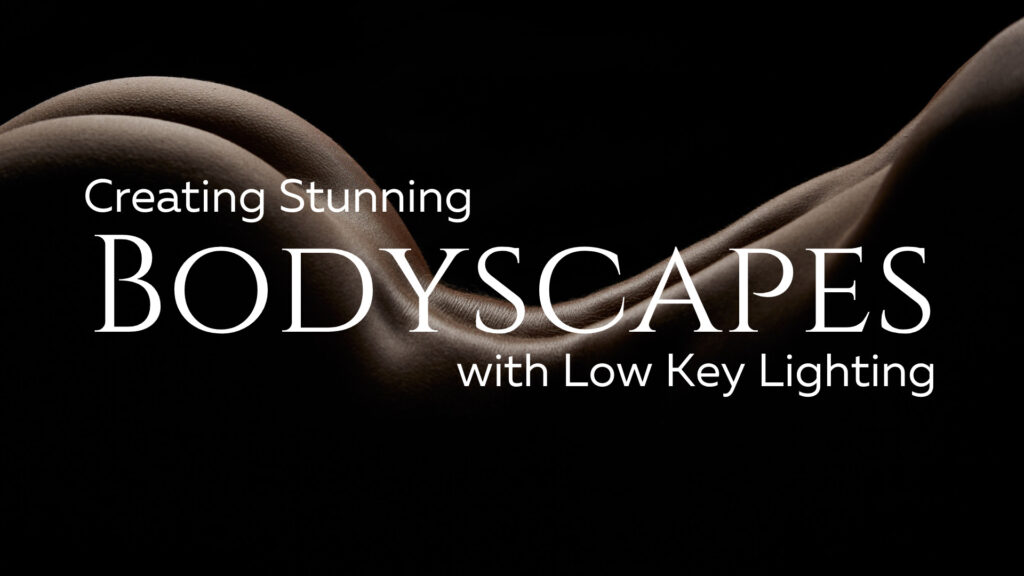Choosing the Right Equipment for Bodyscape Photography: A Concise Guide
Bodyscape photography is an art form that requires a delicate balance of light, shadow, and perspective. While creativity and vision are at the core of this genre, having the right equipment can make the process smoother and the results more stunning. In this guide, we’ll explore the essential equipment for bodyscape photography, from lenses and lighting to backgrounds and creative tools that can enhance your work.
Lenses: Finding the Right Perspective
The lens you choose can dramatically affect the appearance of the bodyscape. Different focal lengths can create various effects, and there’s no one-size-fits-all answer. Here’s what to consider:
- Wide-Angle Lenses: These can create an expansive view, emphasizing curves and contours.
- Standard Lenses: Often used for a more natural perspective, capturing the body without distortion.
- Telephoto Lenses: These can compress and isolate parts of the body, creating unique compositions.
- Macro Lenses: Ideal for capturing intricate details and textures, macro lenses allow you to explore the body’s landscape up close.
Experimenting with different lenses, including macro lenses, will help you find the one that resonates with your artistic vision.
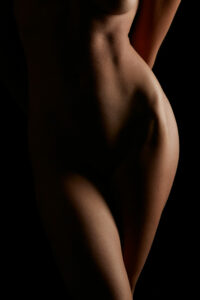
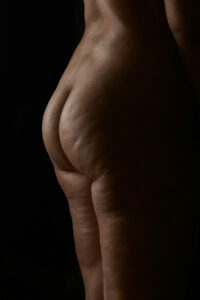
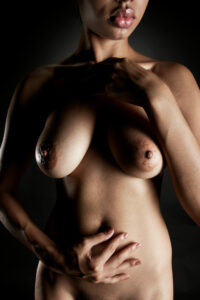
Lighting: Sculpting with Shadows
Lighting is the heart of bodyscape photography. It’s what transforms the human form into a landscape of beauty. The key is having control over the shape and direction of light and the ability to create high contrast. Here are some lighting essentials:
- Strobes: Recommended for precise control over light intensity and direction.
- Continuous Lights: A strong continuous light can also work well, especially for those new to artificial lighting.
- Modifiers: Softboxes, grids, and snoots can help shape and direct the light, creating the desired interplay of light and shadow.
What About Natural Light?
It is possible, however, natural light is a lot more difficult to shape and control than artificial light so artificial is the preferred for consistency and to give the most creative flexibility.
Understanding and mastering lighting is key to achieving outstanding bodyscapes.
Related Article: The Best Strobe Kit for Boudoir
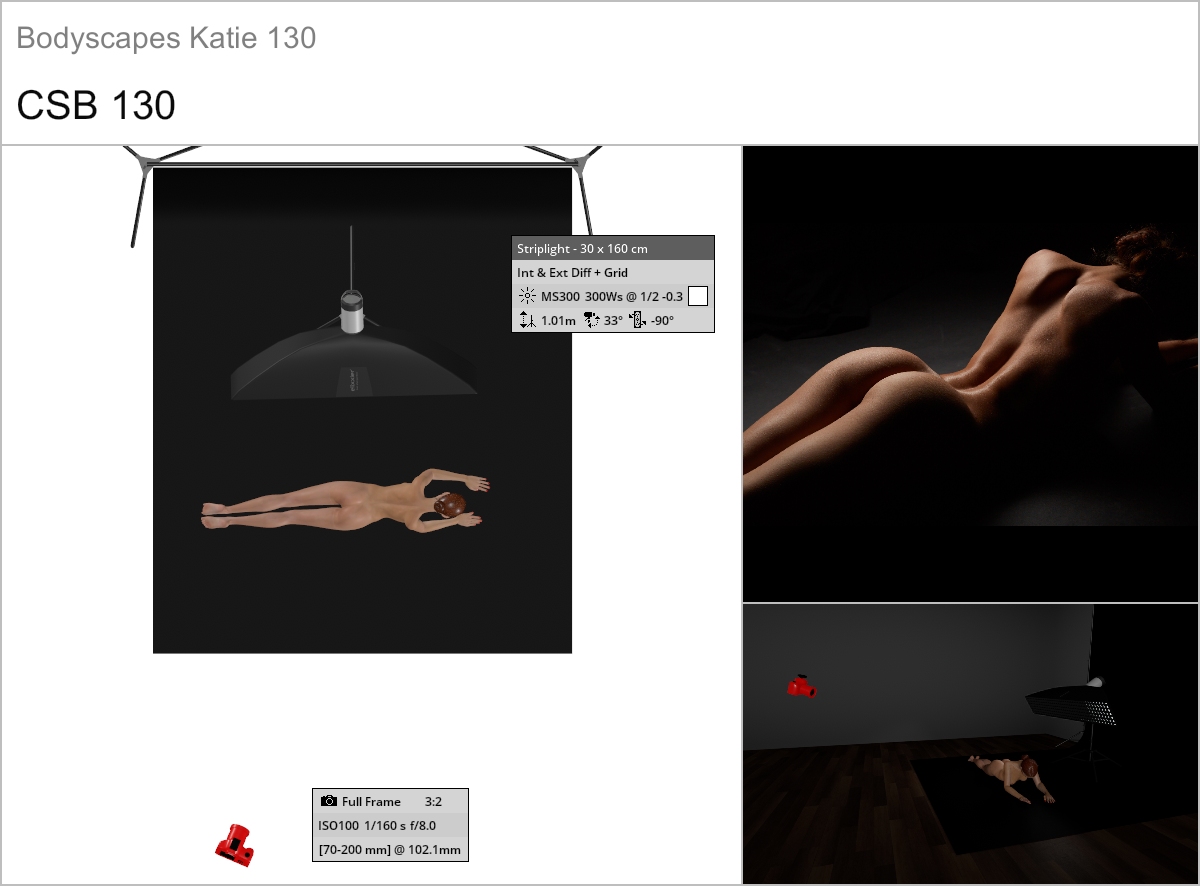
Backgrounds and Creative Tools: Artistic Expression in Bodyscape Photography
In bodyscape photography, the choice of background and creative tools can significantly impact the final image. These elements set the stage for artistic expression, allowing photographers to explore different angles and perspectives, creating more spontaneous and captivating compositions:
- Backgrounds: The choice of background is vital in bodyscape photography. Whether it’s a simple black backdrop to emphasize shadows or a textured surface to add depth, the background sets the stage for the image.
- Reflectors: These can be used to bounce light, softening shadows, or highlighting specific areas.
- Baby Oil Gel: Applying baby oil gel to the skin can create a beautiful sheen, enhancing the appearance of muscles and curves.
- Water Sprayer: A water sprayer can add texture and interest, creating a fresh or sensuous look.
- Colored Gels for Lights: Using colored gels can transform the mood of the image, adding warmth, coolness, or creative color effects.
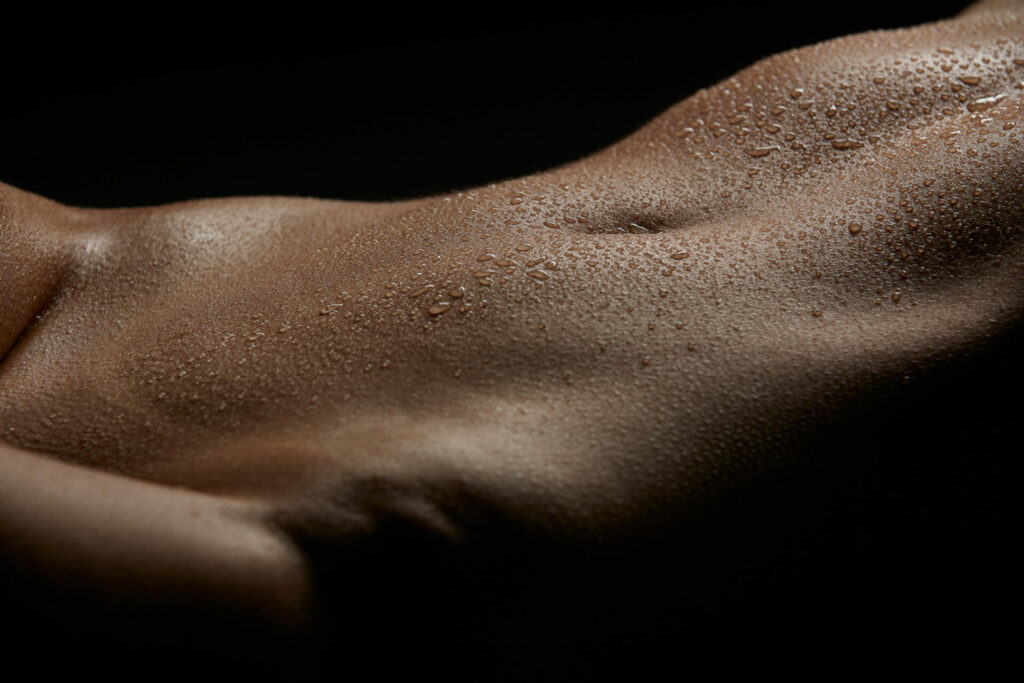
Conclusion
Choosing the right equipment for bodyscape photography is about understanding your vision and finding the tools that help you bring it to life. It’s not about having the most expensive gear but the right gear that aligns with your artistic goals.
If you’re eager to dive deeper into the world of bodyscape photography and master the art of creating stunning images with low key lighting, our course “Creating Stunning Bodyscapes with Low Key Lighting” offers detailed insights, including equipment recommendations tailored to various budgets. Enroll today and embark on a journey of creative exploration.
